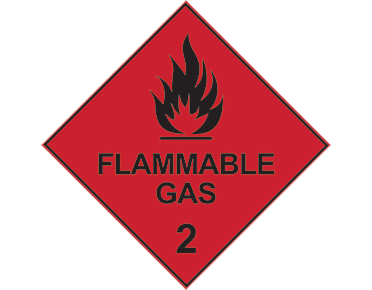Hazardous Materials 103: High Hazard Occupancies

6 years, 6 months ago
NOTE: This is the third installment in a multipart series on hazardous materials in industrial facilities. Part 101 can be found here, while Part 102 can be referenced here.

By Ellen McCulley, AIA, LEED AP, NCARB
Nelson Design, Inc.
Hazardous Materials 101 outlined how to identify, quantify, and determine the usage of hazardous materials in your facility. Hazardous Materials 102 discussed how to evaluate if the amount of hazardous materials exceeds the maximum allowed quantity per control area and how to implement control areas in order to avoid a High-hazard Group H occupancy classification.
If the amount of hazardous materials in your facility exceeds the maximum allowable quantity per control area and you are unable to divide up the materials into multiple control areas, then the space containing the materials would be classified as a High-hazard Group H occupancy. There are five subclassifications of Group H occupancy based on the type of hazard present, which include the following:
Group H-1 for materials that pose a detonation hazard, such as detonatable pyrophoric materials, explosives, organic peroxides, and unstable materials.
Group H-2 for materials that pose a deflagration hazard or a hazard from accelerated burning such as flammable solids, combustible dusts, and flammable liquids and combustible liquids that are used or stored in normally open containers, or in closed containers or systems pressurized more than 15 psi.
Group H-3 for materials that readily support combustion or that pose a physical hazard such as combustible fibers, oxidizing gases, oxidizing cryogenic fluids, and flammable liquids and combustible liquids that are used or stored in normally closed containers or in systems pressurized at 15 psi or less.
Group H-4 for materials that pose a health hazard such as corrosives, highly toxic materials, and toxic materials.
Group H-5 for semiconductor fabrication facilities and similar research and development areas in which hazardous production materials are used.
If multiple classifications are necessary due to the hazardous materials present, then the requirements for each subclassification must be followed.
Unfortunately, due to the hazards present, the allowable building height, allowable number of stories above grade plane, and the allowable area of Group H occupancies are much more restrictive than other occupancies. For example, a common construction type and occupancy for an industrial facility would be Type IIB construction and Group F-1 occupancy. The IBC allows these facilities to have an unlimited area if they meet the following provisions:
1. The building is single story or two story
2. The building contains an automatic sprinkler system throughout the building
3. The building is surrounded by a public way or yard not less than sixty feet.
In contrast, in a Type IIB Group H-2 occupancy, which must be sprinklered throughout, the allowable area factor is only 7,000 SF, with a potential frontage increase. Group H occupancies are allowed in unlimited area buildings containing Group F occupancies; however, the area is limited and there are restrictions on the placement of the Group H occupancy within the building.
If a High-hazard occupancy is located within a facility with other occupancy classifications typical in industrial facilities such as business, factory, and/or storage, then the High-hazard occupancy must be separated from other adjoining occupancies with fire barrier walls and horizontal assemblies. The required rating of the separation is dictated in Table 508.4 of the 2015 International Building Code. This requirement intends to protect the adjoining occupancies from the dangers present in the High-hazard occupancy, but unfortunately increases construction costs.
Several requirements must be met with a High-hazard occupancy designation including an automatic fire detection system, an automatic sprinkler system, and emergency alarms. The International Building Code also requires a minimum fire separation distance from the Group H occupancy to the lot line, as well as a percentage of the Groups H-2 and H-3 perimeter to be located on the perimeter of the building.
The aforementioned information can be found in the International Building Code. The International Fire Code (IFC) also contains several requirements for facilities utilizing hazardous materials. The general requirements can be found in Chapter 50. The IFC also has chapters for individual hazardous material classifications such as flammable liquids, corrosives, etc. that must be followed as well.
ABOUT THE AUTHOR
Ellen McCulley graduated magna cum laude with a Bachelor of Architecture from Iowa State University where she received the Pella Architectural Award from the Department of Architecture. She is a registered architect in Iowa and Illinois. Ms. McCulley joined Carl A. Nelson & Company in 2012. Learn more by calling Ellen at 319-754-8415, or write to canco@carlanelsonco.com.